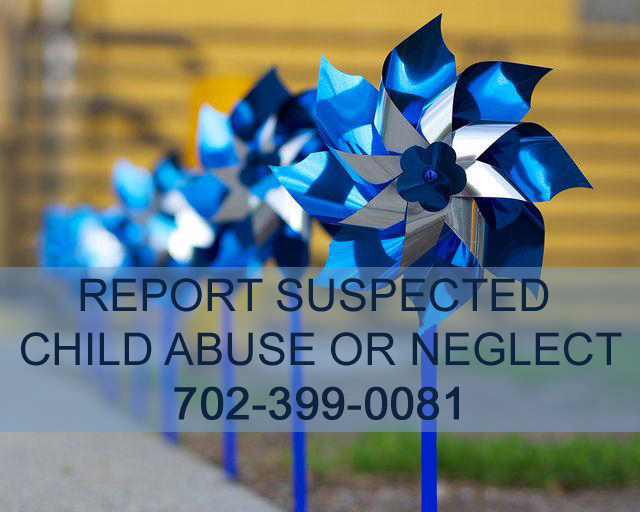Recognizing Signs of Child Abuse and Neglect
Raising a child can be challenging! As parents, we are all vulnerable to losing our temper or simply becoming overwhelmed, and taking out our emotions on our children. The good news is there are some strategies to help.
Here are six of them:
-

Nurture your children and find ways to connect and bond with them
-
Attend parenting classes.
-
Remind yourself to put the needs of your children above your own.
-
Build connections with other parents, friends, and family members so you have a support network that you can turn to for help and advice.
-
Learn about programs that provide financial, food, housing and transportation assistance to families in need.
-
Take time to talk to your children about how they are feeling.
Additionally, the Department of Family Services offers parenting classes through our Parenting Project program. The Parenting Project offers a series of programs to help parents be more effective in raising their children. More information about the Parenting Project is
available here or by calling (702) 455-5295. To view the most recent Parenting Project schedule click here.
Signs of physical abuse:
- Bruising, welts or burns that cannot be sufficiently explained, particularly bruises on the face, lips and mouth of infants or on several surface planes at the same time
- Unusual bruising patterns that reflect the shape of the instrument used to cause injury (e.g., belt, wire hanger, hairbrush, hand, human bite marks)
- Clusters of bruises, welts or burns, indicating repeated contact with a hand or instrument
- Injuries on the body where children usually do not get hurt (e.g., the torso, back, buttocks, thighs, neck)
- Burns that are insufficiently explained, e.g., cigarette burns
- Immersion burns including marks indicating dunking in a hot liquid, including "stocking" and "glove" burns on feet and hands, or "doughnut" shaped burns on buttocks and genitalia
- Rope or restraint burns on the arms, hands, neck or legs
- Dry burns caused by forced contact with a hot surface (e.g., a clothes iron, hair curler, heater or stove)
- Lacerations and abrasions of the lip, eye, or to any part of a child's face
- Tears in the tissue of the gums, possibly as a result of force-feeding
- Laceration or abrasion to external genitalia
- Absence of hair or hemorrhaging beneath the scalp due to vigorous hair pulling
- Withdrawn, fearful or extreme behavior
Signs of possible neglect
Child or youth
- Shows sudden changes in behavior or school performance
- Is frequently absent from school or child care
- Has not received help for physical or medical problems brought to parent or caregiver's attention
- Has learning problems (or difficulty concentrating) that cannot be attributed to specific physical or psychological causes
- Is always watchful, as though preparing for something bad to happen
- Begs or steals food or money
- Lacks adult supervision
Parent or caregiver
- Denies the existence of, or blames the child for, problems in school
- Shows little concern for the child
- Is abusing alcohol or drugs
- Seems apathetic or depressed
Signs of possible sexual abuse
Perceptible Signs of Sexual Abuse
- Difficulty walking or sitting
- Pain or itching in the genital area
- Torn, stained or bloody underclothing
- Bruises or bleeding in external genitalia
- Frequent complaints of stomachaches or headaches
- Venereal disease
- Frequent urinary or yeast infections
- Pregnancy
Behavioral Signs of Sexual Abuse
- Withdrawal or chronic depression
- Inappropriate sex play or premature understanding of sex
- Feeling threatened by physical contact, closeness
- Promiscuity
- Running away from home
- Child is "parentified" or overly concerned for siblings
- Poor self-esteem, lack of confidence
- Peer problems, lack of involvement with friends
- Extreme weight change
- Suicide attempts or threats; especially with adolescents
- Hysteria, lack of emotional control
- Sudden school difficulties
- Unprovoked cruelty to animals
Signs of possible sexual exploitation or human trafficking
- Instability in life functioning: Youth lacks access to basic needs, including stable shelter, and is unable to engage in activities expected of her/his age
- Relationships: Youth's relationships are concerning, placing him/her at risk or in danger
- Finances and belongings: Youth has money or material goods that are incongruent with her/his life circumstances
- Use of technology: Youth's use of internet, cell phone or social media involves social or sexual behavior that is atypical for his/her age
- Physical health: Youth has significant health problems related to sexual activity and lack of access to basic needs
- Risky behaviors: Youth engages in dangerous or risky behaviors, e.g., spending time with abusive partners or in locations where exploitation is known to occur, running away or staying away overnight, using substances)
- Trauma exposure/signs: Youth has been exposed to traumatic circumstances and/or exhibits signs and emotional symptoms of trauma exposure
- Coercion and grooming: Youth exhibits behaviors or otherwise indicates he/she is being controlled or coerced by another person
- Exploitation: Youth has been exposed to sexual exploitation or victimization
 Caesars Palace, Clark County!
Caesars Palace, Clark County!

